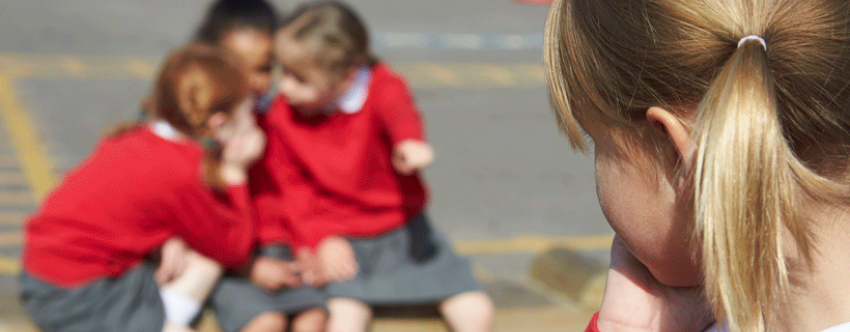News & Views

Anti-Bullying Week 2022: How the Pupil Wellbeing Award can help schools tackle bullying
Anti-Bullying Week runs from 14–18 November and this year’s theme is ‘Reach Out’. As ever, it aims to encourage schools to think about how they can do something positive to counter the harm and hurt that bullying causes.
Research undertaken by the Anti-Bullying Alliance (ABA) found that:
- One in four children reported they were bullied a lot or always.
- Disabled children and those with SEN were around twice as likely to be bullied.
- Males were more likely to be victimised than females.
- Children and young people who were involved in school bullying enjoyed going to school less, had poorer relationships with their teachers, and were less likely to feel safe or included within the school.
So how can your school address the issue of bullying? The ABA is encouraging children and adults to think about reaching out to someone they trust when they need help or reaching out to someone who is being bullied – as well as reflecting on their own behaviour and setting examples for others.
The Pupil Wellbeing Award is a holistic framework for examining how schools promote the mental and physical health of children and young people. The award includes many elements that can assist schools in addressing bullying by ensuring that pupils know where and how to access support, report concerns and help each other.
Whole-school approach
Any efforts to tackle bullying are most likely to be effective when they take an integrated, whole-school approach, ensuring that messages and support are consistent whether delivered as part of teaching and learning, behaviour management, extracurricular activities or other means. The award's framework supports schools to consider all these areas and more.
Share your plans
One element of the award looks specifically at providing a range of strategies to make certain that pupils feel safe from bullying, including ensuring that all pupils and parents understand what constitutes bullying and the damage it can cause and feel able to report and challenge it. To be effective, this should be underpinned by clear policies that reflect the school’s values and ethos and be embedded in the curriculum. Strategies should also be informed by pupil voice and monitored and reviewed regularly. Some of the areas schools can consider include:
- establishing a ‘telling’ culture
- involving pupils in identifying bullying ‘hotspots’
- developing restorative approaches
- building empathy.
12 ways to reach out
Here are some of the other key aspects of the Reach Out theme covered by the Pupil Wellbeing Award.
Reaching out to someone you trust:
1. Raise awareness about the support available across your school via assemblies, school events, posters and the website as well as providing child- and parent-friendly information and guidance.
2. Ensure that a range of reporting mechanisms are available, effective and known to all. Children should be encouraged to report worries about others as well as themselves – or they may be trained to help each other as peer supporters or mentors.
3. Check that staff are relatively and appropriately trained and confident to prevent and address bullying and other wellbeing concerns.
Reaching out to someone who is being bullied:
4. Support children to take on leadership roles as pupil champions, buddies, mediators or mentors and help them to develop valuable knowledge and skills around addressing bullying and promoting wellbeing.
5. Create spaces where children can seek support and feel safe and where trained staff can help pupils, including both the targets and perpetrators of bullying.
6. Ensure that staff have both the skills, resources and time they need to address bullying through the development of appropriate lessons and other resources and to provide support as and when required.
7. Actively listen to pupils’ concerns, including discussing these within the curriculum. Engaging children and young people in conversations about bullying demonstrates that the school shares their concerns and helps to generate empathy and provide reassurance.
8. Encourage children to act as allies or advocates for others. The skills such activities help to develop – including resilience – are also key in enabling children to challenge bullying. This can include reflecting on roles as defenders or bystanders in bullying incidents.
Setting positive examples:
9. Support children to develop positive relationships by developing skills such as communicating respectfully, listening to the views of others and accepting and valuing differences.
10. Foster a sense of belonging for all pupils. Staff can model allyship and advocacy and encourage pupils to take active roles in challenging discrimination and related bullying.
11. Help children to develop strategies to manage emotions that can help them to avoid becoming involved in bullying as both targets and perpetrators.
12. Educate children about the role of social media including how to deal with cyberbullying or online abuse including digital safety skills.
You can download some useful anti-bullying resources for all key stages from Mentally Healthy Schools here.
Find out how you can make more positive changes in your school with the Pupil Wellbeing Award.
About the author

Mark Jennett is a trainer, consultant and writer specialising in wellbeing, mental health, PSHE and equality and diversity. He is also the lead adviser on Optimus Education’s Wellbeing Award for Schools.